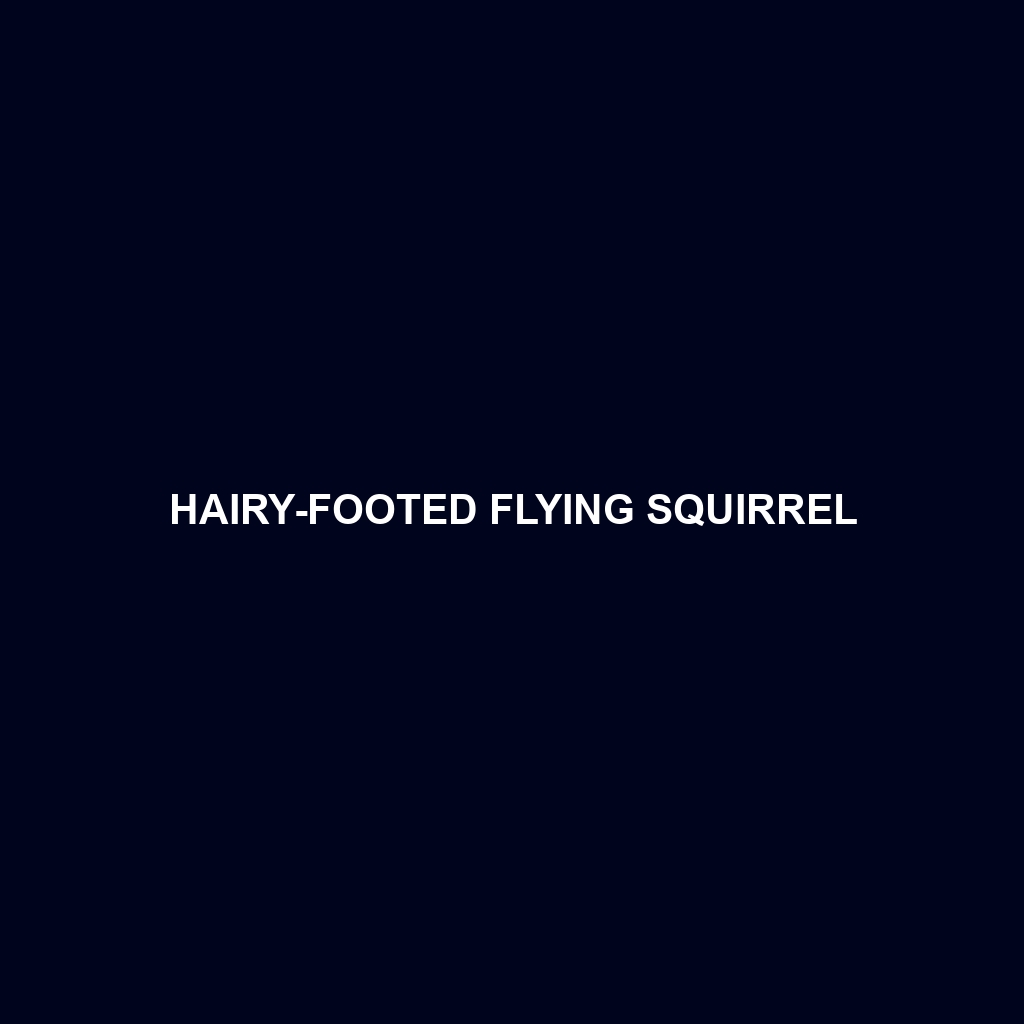Hairy-footed Flying Squirrel (Scientific Name: )
Common Name: Hairy-footed Flying Squirrel
Scientific Name:
Habitat
The Hairy-footed Flying Squirrel is primarily found in the temperate forests of East Asia, notably in China and parts of Taiwan. These squirrels favor mixed deciduous and coniferous forests, often inhabiting areas with dense tree cover that provide ample opportunities for gliding between branches. The presence of high, mature trees is essential for their survival, as they rely on these environments for protection and food.
Physical Characteristics
The Hairy-footed Flying Squirrel typically measures about 28 to 35 cm in length, with a bushy tail that can reach up to 30 cm. Its fur is predominantly grey to brown, with a lighter underside and distinctive long, hairy feet adapted for gliding. Their large, expressive eyes are well-suited for nocturnal activity, and they possess a patagium—a membrane stretching from their wrists to their ankles—that allows for remarkable gliding abilities.
Behavior
Hairy-footed Flying Squirrels are predominantly nocturnal, engaging in activities like foraging and social interactions during the night. They are agile climbers and use their gliding abilities to travel between trees safely and efficiently. Social structures can vary, with some individuals forming small family groups, while others may be solitary. They communicate through vocalizations and scent markings, especially during the mating season.
Diet
The diet of the Hairy-footed Flying Squirrel mainly consists of fruits, nuts, and tree sap. They are particularly fond of acorns and beech nuts, which provide necessary fats and proteins. In addition to these, they occasionally feed on flowers and leaves. Their foraging habits are crucial for seed dispersal, contributing to the health of their forest ecosystem.
Reproduction
Breeding for Hairy-footed Flying Squirrels typically occurs in late winter to early spring. Following a gestation period of about 40 to 45 days, females give birth to one to three offspring. The young are born blind and helpless, relying entirely on their mother for nourishment. They begin to glide and forage independently around two months after birth, learning essential skills by observing their mother.
Conservation Status
The Hairy-footed Flying Squirrel is currently listed as ‘Vulnerable’ by the International Union for Conservation of Nature (IUCN). Habitat loss due to logging and urban development poses significant threats to their population. Conservation efforts are needed to protect their natural habitats and promote sustainable forest management practices.
Interesting Facts
Did you know that Hairy-footed Flying Squirrels can glide over 50 meters in a single leap? Their ability to maneuver in the air is not only fascinating but also helps them escape predators. They have a unique pair of thumbs on their front feet, aiding in climbing and grasping branches. Additionally, they play an essential role in forest ecology as seed dispersers, contributing significantly to forest regeneration.
Role in Ecosystem
The Hairy-footed Flying Squirrel is an integral part of its ecosystem, as it aids in seed dispersal and supports the regeneration of various tree species in their habitat. By foraging on fruits and nuts, they help maintain the biodiversity of the forest. Their interactions with other species, including predators and potential competitors, also contribute to the ecological balance within their environment.
